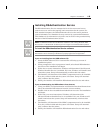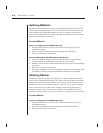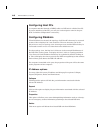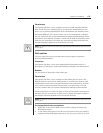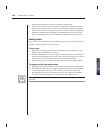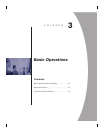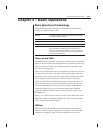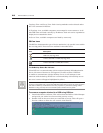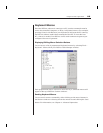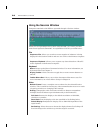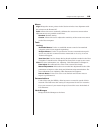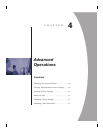
Chapter 3: Basic Operations 21
Chapter 3 – Basic Operations
Basic Operations/Terminology
Throughout this chapter and the rest of the manual, the following
naming conventions will be used:
Host PC A computer that is attached to the DSR and controlled
through the DSView software
Node A Host PC
Port One of the sixteen PC/KVM Switch interfaces on the DSR
Remote PC A computer running DSView
Session The process of accessing and controlling a single Host
PC connected to a DSR unit from a Remote PC. A
Session is initiated from DSView running on a Remote
PC. More than one session at a time may be launched
and active using DSView.
Power up and LEDs
The DSR should be powered up before any attached servers. Indicator
lights on the front of the unit will illuminate to indicate the status and
activity of each port and a green LED labeled Power will show that
the unit is receiving power.
There are two LEDs above each port number on the front of your unit:
one green and one amber. The green LED will illuminate when the
attached system is powered up. The amber LED will illuminate when
that computer is being accessed by a DSView client or local port.
There are also LEDs on the DSR front panel to indicate the status of
your LAN connection. If you are successfully linked to the network,
the green LED labeled Link will be lit and an amber LED labeled
10/100 will indicate that you are communicating at the 100Mbps
speed. This LED will blink if there is network activity on the associ-
ated DSR unit.
Finally, you will find a 9-pin serial connector on the back panel of the
DSR. This is used to configure the DSR and will be discussed further
in the Terminal Operations Chapter.
DSView
KVM switching with the DSR is accomplished through the DSView
software. When the DSView application is opened, a list of available
computers is displayed. This list may be displayed in two forms,



